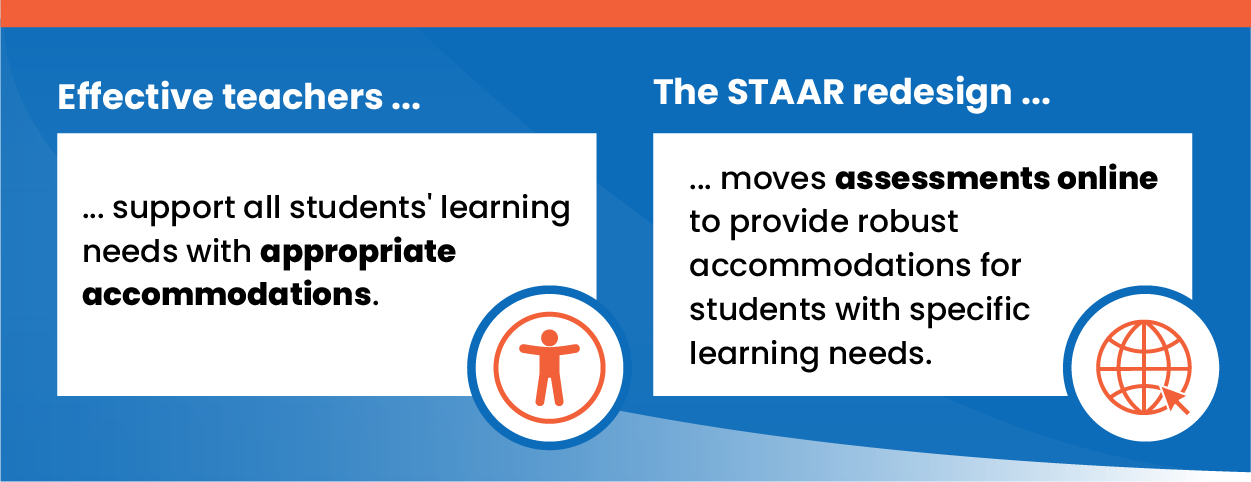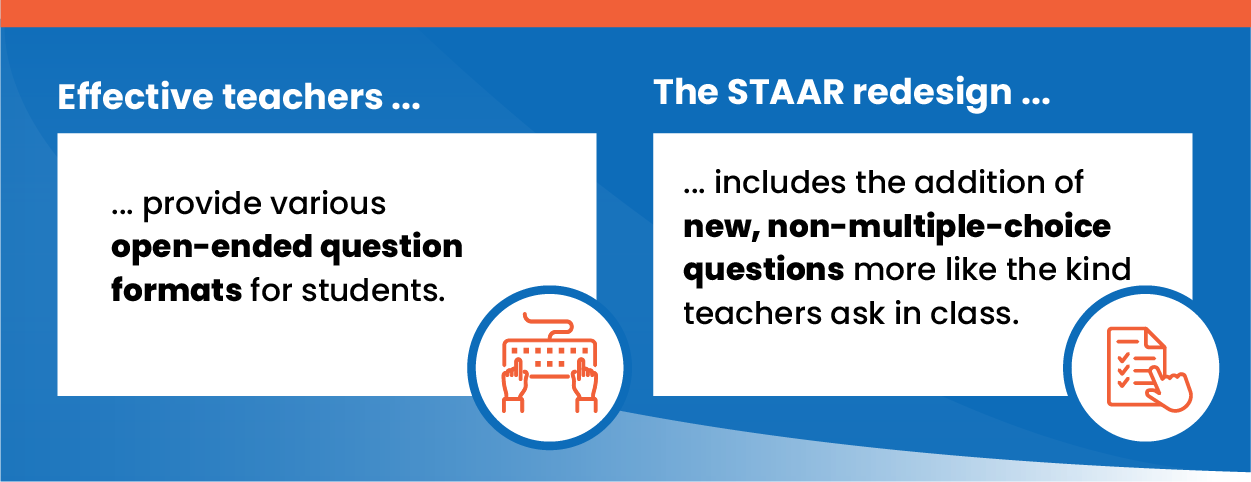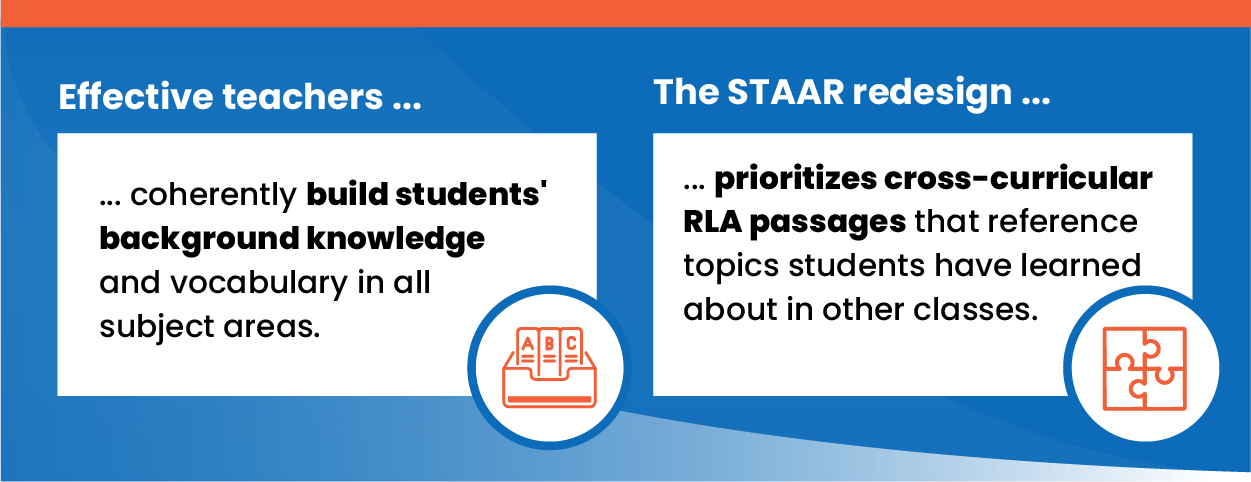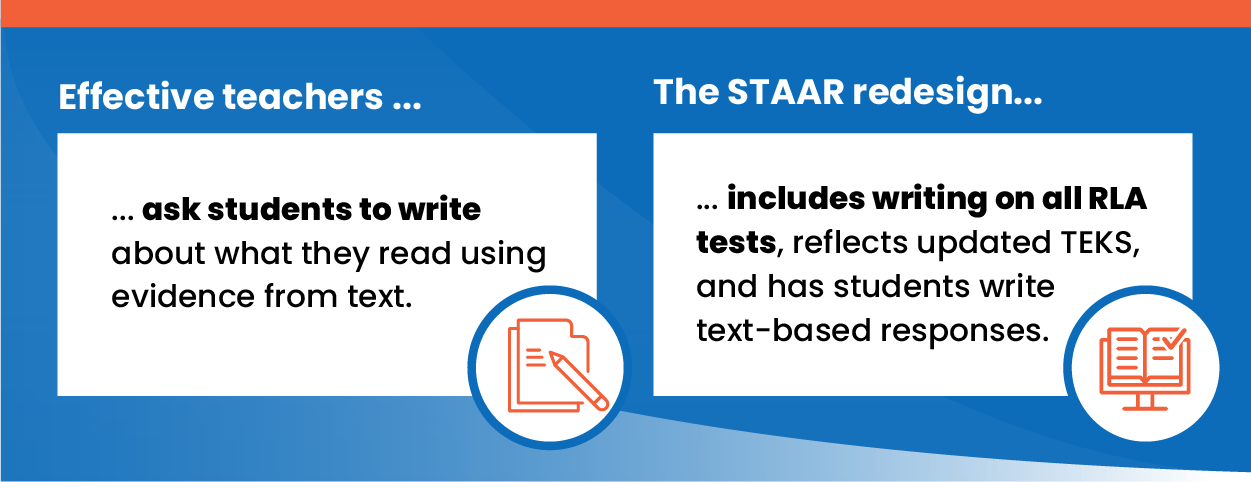STAAR Redesign
The State of Texas Assessments of Academic Readiness (STAAR®) was redesigned and the changes were implemented in the 2022–2023 school year to make the test more tightly aligned to the classroom experience.
Summative Tests Redesign Overview
The STAAR redesign was a result of House Bill (HB) 3906 passed by the 86th Texas Legislature, 2019. The Texas Education Agency (TEA) worked with a wide range of education stakeholders, including the Assessment Education Advisory Committee, to explore the most instructionally supportive approach to implement these changes.
The STAAR redesign includes several components:
- Online Testing and Accommodations
- New Question Types
- Cross-Curricular Passages
- Evidence-Based Writing
For more information about how the STAAR redesign improves alignment to the classroom experience hear what teachers are saying. See below for more information about each component.
Online Testing and Accommodations
HB 3261, enacted by the 87th Texas Legislature in 2021, required state assessments to be administered online by the 2022–2023 school year. Online administration allows students to receive accommodations like those they get in the classroom, provides faster test results, improves test operations, and allows non-multiple-choice questions. All students are required to be assessed online, with minimal exceptions. See what educators have to say about the robust accommodations available to students through online testing.
New Question Types
HB 3906 established a “multiple choice cap,” meaning that no more than 75 percent of points on a STAAR test can be based on multiple choice questions. Texas educators helped design new question types that reflect classroom test questions and allow students more ways to show their understanding. Resources to help in understanding these new question types are available on the content-specific STAAR resources pages.
Cross-Curricular Passages
The number of cross-curricular informational passages that reference content aligned to the Texas Essential Knowledge and Skills (TEKS) for other subject areas (e.g., social studies, science, mathematics, fine arts, etc.) have increased on the assessments. While the cross-curricular passages on reading language arts (RLA) assessments include topics from other subject areas, the questions only assess RLA TEKS; students are not scored on their understanding of TEKS for other subject areas.
Evidence-Based Writing
STAAR RLA assessments (grades 3–8 RLA, grades 3–5 RLA Spanish, and English I, and II) assess both reading and writing and include an extended constructed response, or essay, on every assessment. The essay component has shifted from writing a response for a stand-alone prompt to writing a response based on a reading passage. Students write in one of three possible modes: informational, argumentative, or correspondence and are scored using a 5-point rubric. The rubric includes two main components: idea development and language conventions.
To clarify any information from the content on this web page, please submit a Help Desk ticket to Student Assessment





